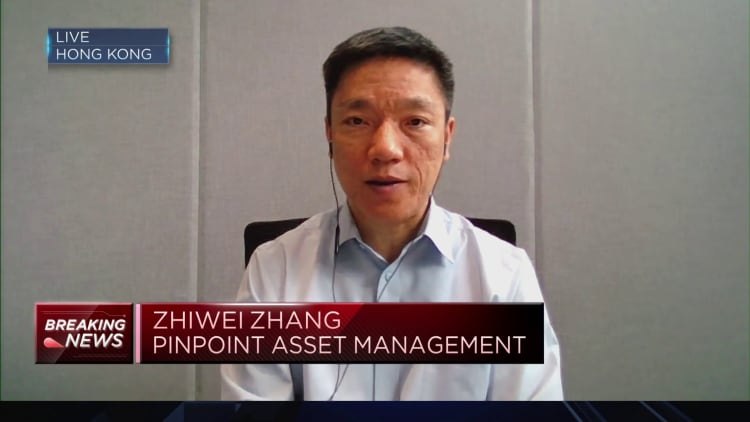
A worker inside a bending and welding workshop for wind turbine towers at a CS Wind Corp. factory in Tan Thanh, Ba Ria-Vung Tau Province, Vietnam, on Wednesday, Feb. 15, 2023. Renewables will dominate the growth of the worlds electricity supply over the next three years, according to the International Energy Agency, as countries race to get to zero emissions. Photographer: Linh Pham/Bloomberg via Getty Images
Bloomberg | Bloomberg | Getty Images
Most developing economies in Asia might have left the worst of the broad manufacturing slowdown behind in 2023, according to a series of private surveys released Thursday.
South Korea’s S&P manufacturing purchasing managers’ index recorded its first expansionary reading since June 2022 at 51.2 in January, up from 49.9 in December.
“The health of the South Korean manufacturing sector registered a renewed improvement at the start of 2024. Output, new orders and exports all returned to growth, while there was a sharper expansion in purchasing,” Usamah Bhatti, an economist at S&P Global Market Intelligence, said in the release Thursday.
“The strongest upward contribution came from an expansion in new orders. The increase was only modest, yet the first since June 2022. Growth was reportedly reflective of increased domestic and international orders, particularly for new products,” Bhatti added.

A similar survey reading for Vietnam came in at 50.3 in January, from 48.9 in December, while Indonesia’s reading stood at 52.9 in January, from 52.2 in December. The overall print for ASEAN economies stood at 50.3 in January, up from 49.7 in January — the first time it has edged over 50 in five months.
The 50-point mark separates expansion from contraction. These private PMI surveys are typically seen as one of several leading indicators of economic activity in the respective economies.
Possible turnaround?
In its January forecast, the International Monetary Fund said it expects emerging economies in Asia to grow 5.2% this year — a 0.4 percentage point upgrade from its forecast in October. The IMF upped its global economic growth projection to 3.1% in 2024 due to the greater-than-expected resilience of the U.S. and several large developing economies as well as fiscal support in China.
While Taiwan, Malaysia and Thailand were still mired in sub-50 readings, Malaysia’s 49 was its best reading in 17 months. Taiwan and Thailand also saw improvements in January over December’s print.

“The latest PMI survey data added to evidence that the worst of Taiwan’s manufacturing downturn is now behind us, with the headline index moving closer to the crucial neutral 50.0 level,” Annabel Fiddes, economics associate director at S&P Global Market Intelligence, said in the release.
“Companies reported the slowest drops in output and new work for nearly a year, while business confidence surged amid hopes that 2024 will bring a strong recovery in customer demand,” she added.
Asia giants
Even though there are some green shoots for China, Asia’s largest economy, a continued divergence between official and private PMI surveys point to the uneven landscape.
The Caixin China PMI was 50.8 in January, according to a release on Thursday, after also coming in at 50.8 in December — helped by the first expansion in new export orders in seven months.
China’s National Bureau of Statistics released data Wednesday that showed the country’s official manufacturing PMI coming in at 49.2 in January, a fourth consecutive monthly contraction — compared with 49 in December.
